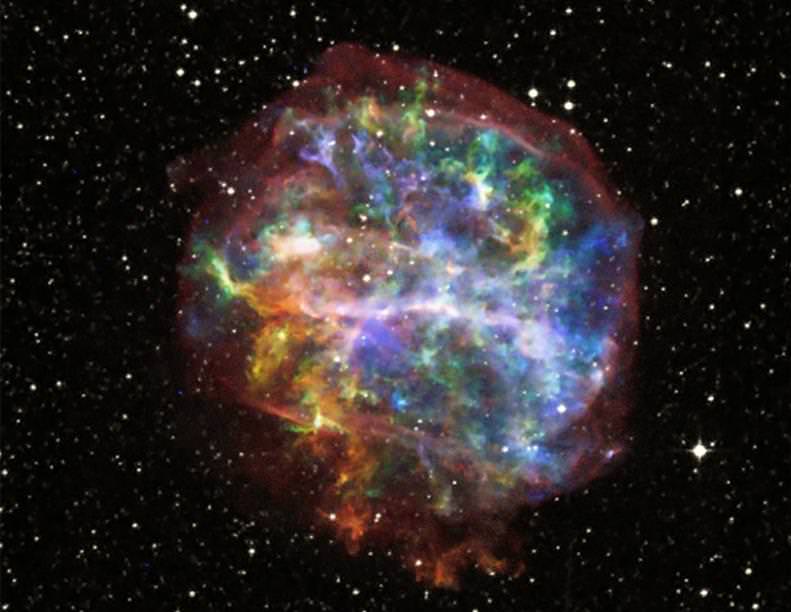Computer models are continuing to play an increasing role in scientific discovery. Everything from the first moments after the Big Bang to potential for life to form on other planets has been the target of some sort of computer model. Now scientists from the RIKEN Astrophysical Big Bang Laboratory are turning this almost ubiquitous tool to a very violent event – Type Ia supernovae. Their work has now resulted in a more nuanced understanding of the effects of these important events.
Type Ia supernovae are a type of supernova that occur in binary star systems – specifically systems with a white dwarf star. Eventually the white dwarf will run out of fuel to power its nuclear reaction. However, in some cases, matter from the companion star can reignite the reactions of the white dwarf, which could then cause a runaway nuclear fusion event, resulting in a Type Ia supernova and creating all of the naturally occurring heavy elements with atomic weights larger than iron.
When the white dwarf explodes, it creates a shockwave known as a remnant. These remnants are known to vary along with the explosion that created them, but it has not really been clear how or why.
That is where the computer simulation comes in. The team at RIKEN, led by physicist Gilles Ferrand, actually developed two different models – one for modeling the supernova explosion itself and one modeling the remnant.

Credit: NASA
There were two main variables that the RIKEN team wanted to control as part of the explosion model. The first was how exactly the runaway reaction that caused the supernova is ignited. The second was how that explosion propagates itself through the collapsing star.
Outputs from the various models created using this methodology were then fed into the simulation of the supernova remnant. Dr. Ferrand and his team noticed that there were four main categories the remnants could be categorized into, based on some variable details of the actual explosion that spawned them.
The first was the number of points at which the supernova explosion begins to take place. The two broad categories for this variable are that the explosion would either start in a few, distinct places, or multiple places simultaneously throughout the star.
The second variable deals with a concept know as deflagration, which is defined as “a turbulent fire that moves slower than the speed of sound.” Alternatively, these deflagrations can occasionally devolve into an extremely fast moving detonation. Deflagration fires are caused by the explosions that kick off the supernova, but the speed with which they move could have profound impacts on the remnant.

Combining all these variables into a full remnant model allows the researchers to define four distinct types of remnant that result from four different types of explosions. Since remnants are still visible hundreds of years after the supernova that created them takes place, understanding their form and then backtracking to the type of supernova that caused it in the first place could be particularly useful for understanding the frequency of different types of stellar explosions.
Someday there might even be a computer model that can accurately predict what kind of remnant would be created by a given supernova before it is even visible. Sounds like some good follow-up work for Dr. Ferrand and his team.
Learn More:
RIKEN – Supernova simulations reveal how stellar explosions shape debris clouds
UT – The Solar System has been Flying Through the Debris of a Supernova for 33,000 Years
UT – A New Supernova Remnant Found from an Exploding White Dwarf Star
Lead Image:
Artist depiction of a supernova remnant growing out of the original explosion while being shaped by it.
Credit: Ferrand et all, permission from the American Astronomical Society

